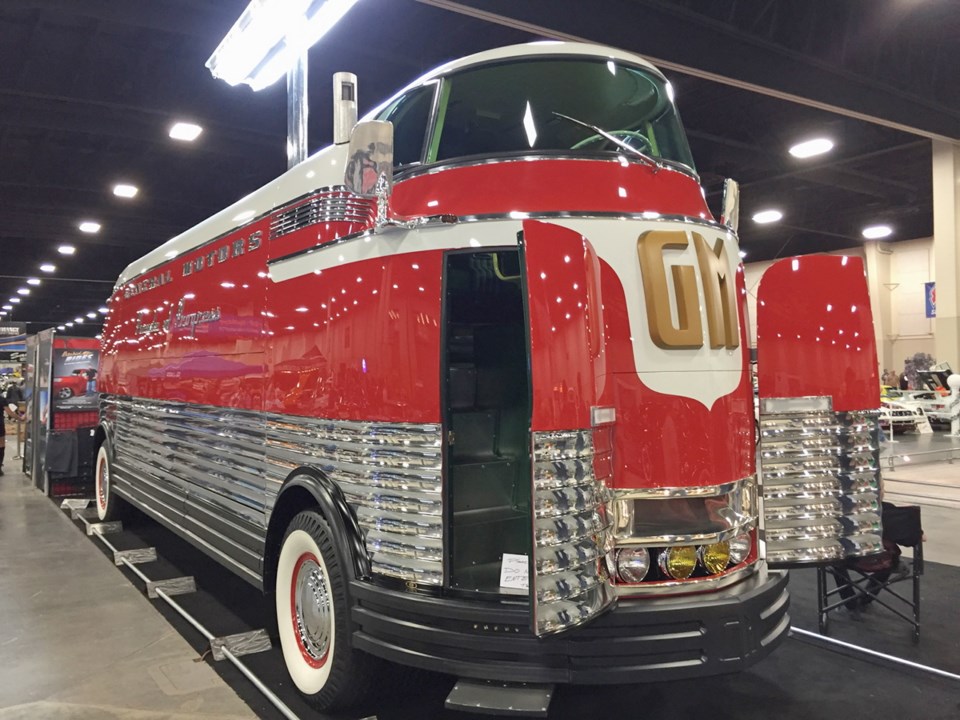The theme of the 1939-1940 New York World’s Fair was “Building The World of Tomorrow.” It promised the public a celebration of eye-opening consumer products, a grand exposition where industrial designers demonstrated their wonders of science and technology for the future. Its inspiration could be traced to Chicago’s 1893 World’s Columbian Exposition.
Constructed on a wetland in Flushing Meadows in the borough of Queens, New York City, the fair was a welcome respite. It marked a high point between the economically devastating Great Depression and the U.S.’s anticipated entry into the Second World War, which occurred when Japan made a sneak attack on Pearl Harbor, Hawaii, on Dec. 7, 1941.
An integral part of the future was transportation. Trains were in their heyday and airplane travel, while still expensive, was gaining a following. By far, the most popular travel mode was the private automobile, and who could better envision its future than industry leader General Motors?
GM was the world’s largest carmaker, but the Depression had severely reduced production and claimed many companies. GM emerged on top by building on the blueprint laid down by its brilliant president/chairman Alfred P. Sloan, Jr., who championed styling, annual model changes and a hierarchy of cars from Chevrolet to Cadillac.
For the New York fair, GM’s exhibits included jet and diesel engines and constantly changing animated dioramas of future cities and towns. Popular industrial designer Norman Bel Geddes designed a “Futurama” model of wide, gently curving super highways carrying sleek futuristic cars.
Following the 1933-34 Chicago World’s Fair, GM research chief Charles Kettering felt the display should have wider exposure and urged that a travelling road show be developed. A fleet of eight bus-like haulers called “Streamliners” was built to carry its “Parade of Progress” exhibition around the country.
After the New York Fair, the idea was revived and the Streamliners were replaced by a fleet of 12 newly designed “Futurliners” built by the Yellow Truck and Coach Co., of Pontiac, Michigan. Futurliner was intentionally misspelled so it could be patented.
The Futurliner was an impressive vehicle measuring 10 metres long, 2.5 m wide and 3.5 m high with a 6.3-m wheelbase.
The driver sat high in the forward cab surrounded by a fully curved panoramic windshield. The operator reached the cabin through a door at the front corner and set of stairs. Riding about 2.7 m above the ground, the first few highway underpasses must have been an intimidating experience for the driver.
The Futurliner weighed a hefty 13,600 kilograms empty and was powered by a small four-cylinder diesel engine, which gave it limited performance.
Styling was pure art deco. The predominant colour was red with a white top and a wide, shiny, fluted metal band running almost totally around the lower body. It had whitewall tires, and the big GM letters dominating the front gave it an almost locomotive-like appearance.
An unusual feature was the use of dual wheels both front and rear. The front duals so overworked the power steering that it was a constant source of trouble.
Top-hinged, gullwing-type, 4.9-m-long side-doors rose up to reveal the displays and a spar-like lighted tower rose 2.1 m from the roof to illuminate the Futurliner and surrounding area.
The Futurliners hit the road in 1940 following the fair, but their tour was cut short in December 1941 by Pearl Harbor. As the U.S. went on a war footing, GM stored them and turned its attention to military production.
After the war, GM revived its Futurliner program by modernizing them with less glass to reduce the temperature in the non-air-conditioned cab. The small diesel was replaced with a six-cylinder, 5.0-litre GMC gasoline truck engine. Power went to the rear wheels through a four-speed Hydra-Matic transmission and a two-speed gearbox for a total of eight gear ratios. Top speed was about 65 km/h.
The fleet of 12 Futurliners took to the highways again in 1953, but it was a new era. The advent of television and other attractions reduced interest in travelling road shows, and in 1956, GM retired the Futurliners and disposed of them.
Of the 12 originals, nine have been located, with at least seven of those restored or under restoration. The other two were beyond restoration and are being used as donor vehicles.
The sight of those Futurliners and support vehicles cruising the highways and rolling into town out of the morning mist must have been an awesome sight in those simpler times. Surely we shall never see their likes again in this electronic and somewhat jaded age, but in earlier days they were a much anticipated and entertaining attraction.



